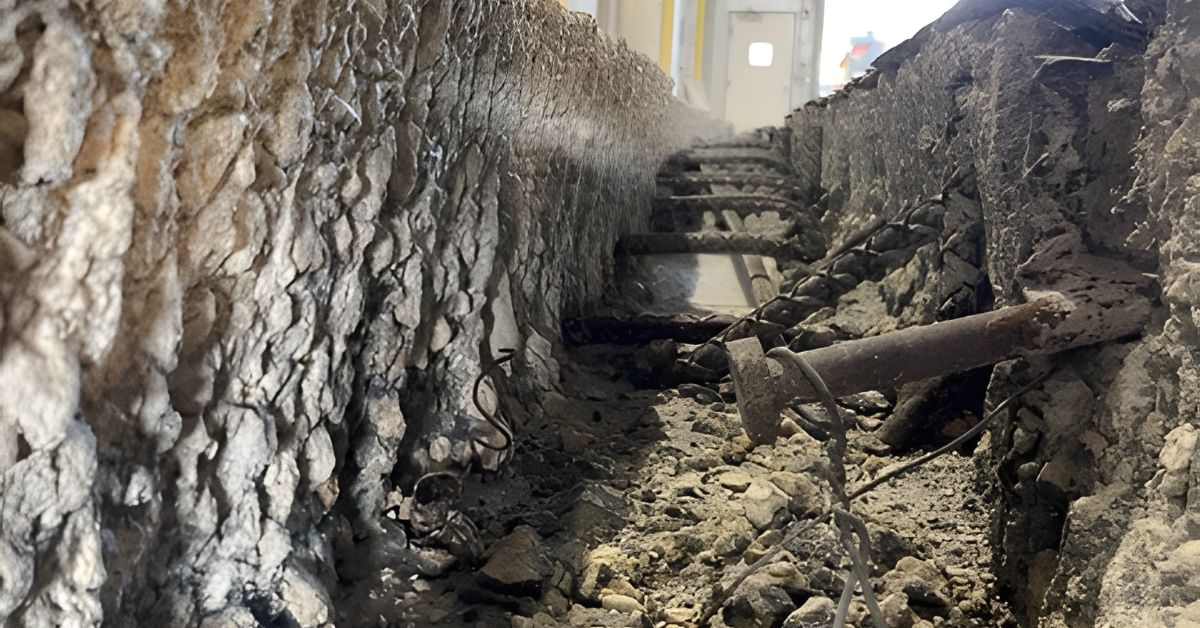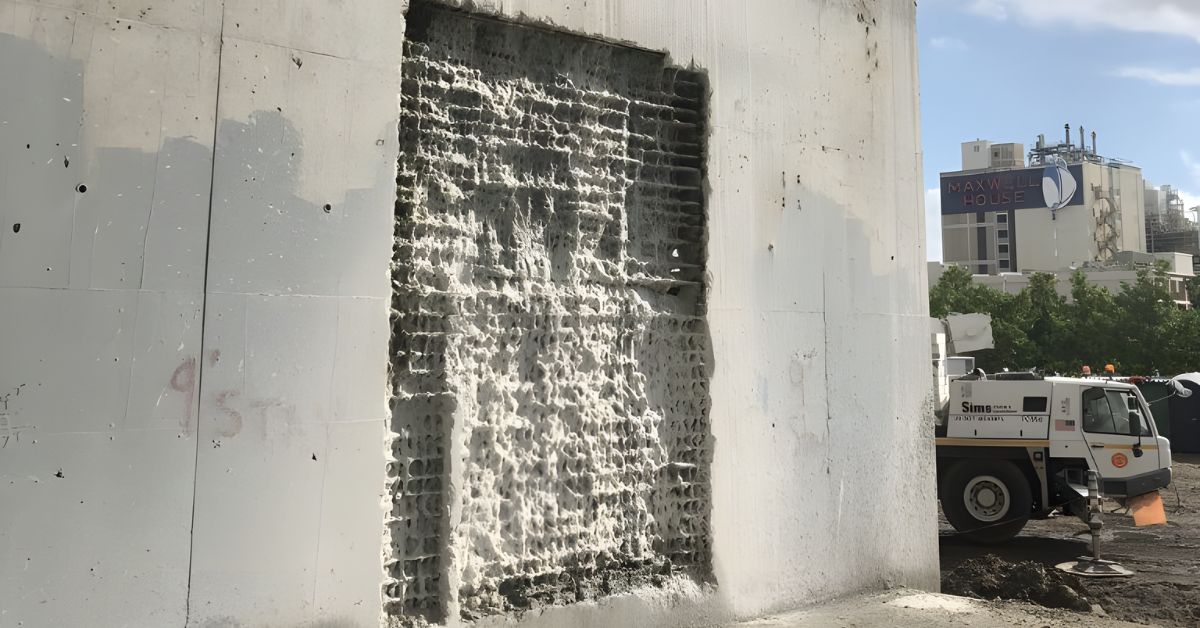Hydrodemolition is a highly effective method for concrete removal, utilizing high-pressure water jets to break apart concrete without damaging the reinforcing steel. This technique is favored for its precision, efficiency, and reduced risk of micro-fracturing compared to traditional methods. However, executing these projects during winter introduces a unique set of challenges that require careful planning and preparation.
Successfully performing hydrodemolition in cold weather is possible, and experts can complete it efficiently with the right approach. Understanding the potential issues and implementing proactive measures is essential for maintaining safety, protecting equipment, and ensuring project timelines are met. This guide provides a comprehensive overview of how to prepare for hydrodemolition in winter conditions, from site preparation to operational best practices.
Challenges of Winter Hydrodemolition
Winter conditions present several significant challenges for hydrodemolition projects. Freezing temperatures can impact equipment, materials, and the worksite itself, requiring specific strategies to mitigate these risks. Familiarize yourself with some of the most common challenges below to know what you might expect if you’re looking into winter services.
Freezing Equipment
The most immediate challenge is the risk of water freezing within the hydrodemolition equipment. Pumps, hoses, nozzles, and robotic units are all susceptible to damage if water turns to ice inside them, potentially leading to costly repairs and project delays.
Frozen Concrete
Concrete that is already frozen can be more difficult to remove. The structural properties of frozen concrete can alter the effectiveness of the high-pressure water jets, sometimes requiring adjustments to pressure settings and operational techniques to achieve the desired removal depth.
Icy Surfaces
The combination of water from the hydrodemolition process and freezing temperatures creates hazardous icy surfaces. This poses a significant slip-and-fall risk for workers on the site, making safe movement and operation require more preparation.
Difficulty Handling Debris
The slurry and debris generated during this process can freeze, making cleanup and disposal more complicated. Frozen debris is harder to handle and transport, adding extra steps and labor to the cleanup process.
Subgrade Freezing
After concrete removal, the exposed subgrade is vulnerable to freezing. A frozen subgrade can heave and expand, potentially causing structural issues for the repair work that follows. Protecting the subgrade is a critical step in cold-weather projects.
 Preparing Your Site for Cold-Weather Hydrodemolition
Preparing Your Site for Cold-Weather Hydrodemolition
Proper site preparation is the first line of defense against the challenges of winter. Creating a controlled environment is key to a successful project.
A common and effective strategy is to construct heated enclosures around the work area. These temporary structures, often made of insulated tarps or panels, help maintain a stable temperature, preventing freezing and creating a safer environment for the crew.
Heating is crucial within these enclosures. Portable industrial heaters can raise the ambient temperature above freezing, protecting the equipment, the concrete surface, and the surrounding site from the cold. This controlled climate ensures that the hydrodemolition process can proceed as planned.
Proper lighting is also essential, as winter days are shorter. Adequate lighting ensures that the work area is clearly visible, which is vital for the quality of the work and safety of the crew.
Preparing Equipment for Cold-Weather Hydrodemolition
Equipment preparation is just as important as site preparation. Taking steps to protect your machinery from the cold is not negotiable when completing hydrodemolition in the winter.
Before starting work, thoroughly inspect each piece of equipment involved. Check hoses, pumps, and fittings for any signs of wear or damage that cold temperatures could worsen. For example, cold temperatures can exasperate cracks in hoses and pumps with exposure to freezing temperatures or water.
Using environmentally safe antifreeze in the water systems is a critical step when the equipment is not in use. This prevents water from freezing inside the machinery and causing internal damage between work shifts.
Insulating water lines and components is another effective measure. Wrapping hoses and pipes with insulating materials helps to prevent freezing during operation and brief pauses, ensuring a continuous flow of water.
Best Practices for Winter Hydrodemolition
Adhering to best practices during winter hydrodemolition is essential for efficiency and safety. These operational guidelines help manage the unique variables of working in the cold.
Monitor Weather Conditions
Stay informed about the weather forecast. Monitoring temperature, wind chill, and potential storms allows the project team to anticipate challenges and adjust plans accordingly, such as increasing heating or scheduling work during warmer parts of the day.
Utilize Heating and Insulation
Consistent use of heating and insulation is fundamental. Ensure your industrial heaters are functioning correctly and that enclosures are well-sealed to retain warmth. This proactive approach minimizes the impact of external weather conditions on the project.
Store Equipment Properly
Proper equipment storage is crucial. At the end of each shift, store machinery in a heated area or fully winterized according to manufacturer recommendations. This prevents overnight freezing damage and ensures the equipment is ready for the next day.
Safety Considerations for Winter Hydrodemolition
Safety is the top priority on any job site, and winter conditions require additional precautions. The well-being of the crew must be the primary focus.
Equip all personnel with appropriate personal protective equipment (PPE) for cold and wet environments. This includes insulated and waterproof clothing, gloves, and footwear to protect against cold stress and hypothermia.
Managing icy surfaces is a constant task. Regularly apply sand or salt to walkways and work areas to improve traction and reduce the risk of slips and falls. Clear communication about hazardous areas is also vital.
Training the crew on the specific risks associated with winter hydrodemolition is essential. This includes recognizing the signs of cold-related illnesses and understanding the procedures for working safely in a cold, wet environment.
 Clean Sweep: Your Partner for Winter Hydrodemolition
Clean Sweep: Your Partner for Winter Hydrodemolition
Navigating the complexities of winter hydrodemolition requires experience and specialized knowledge. Our experienced contractors at Clean Sweep Hydroblasting can implement the necessary preparations and best practices to ensure your project is completed safely and efficiently, regardless of the weather.
Working with a team like Clean Sweep, that understands the challenges of cold-weather concrete repair, is invaluable. We bring the right equipment, techniques, and safety protocols to the job, providing peace of mind and delivering high-quality results. When you need hydrodemolition services during the winter months or any time of year, you can rely on Clean Sweep Hydroblasting.
Tackle Cold-Weather Projects with Efficient Hydrodemolition
Winter hydrodemolition is a manageable process when approached with careful planning and preparation. By addressing the challenges of freezing temperatures head-on, project managers can ensure that work continues safely and effectively through the colder months.
From enclosing the worksite to properly maintaining equipment and prioritizing crew safety, every step is crucial for success. Our experts at Clean Sweep Hydroblasting are seasoned in these preparations for hydrodemolition in the winter, so don’t hesitate to reach out when you need services, regardless of the season.


 Preparing Your Site for Cold-Weather Hydrodemolition
Preparing Your Site for Cold-Weather Hydrodemolition Clean Sweep: Your Partner for Winter Hydrodemolition
Clean Sweep: Your Partner for Winter Hydrodemolition


